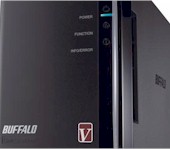 The Buffalo LinkStation Pro Duo WVL has been added to the NAS Charts.
The Buffalo LinkStation Pro Duo WVL has been added to the NAS Charts.
The Pro Duo WVL is basically a dual-drive version of the LinkStation Pro VL reviewed last month. It too uses the Marvell 88F6282A0C160 storage SoC clocked at 1.6 GHz that is starting to pop up in other low-end NASes like QNAP’s new TS-x19P+ line.
The WVL sports the "V" badge that indicates it’s a member of Buffalo’s new "V-series". It comes in the 2 TB capacity (LS-WV2.0TL/R1) that Buffalo sent for review and a 4 TB model (LS-WV4.0TL/R1). The WVL is actually quite small, only slightly larger than the two 1 TB Seagate Barracuda 7200.12 3.5" SATA drives (ST31000528AS) contained within.
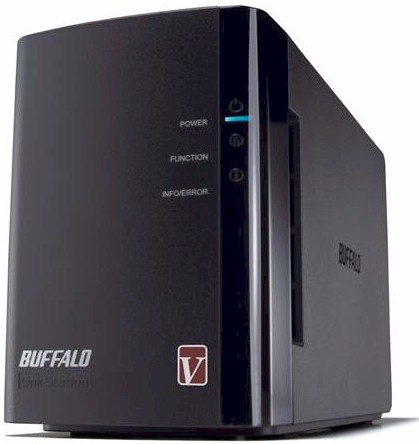
In fact, it’s the same enclosure used on the LinkStation Duo WXL that the WVL replaces. Access to the drives is as easy as sliding off the front plastic cover.
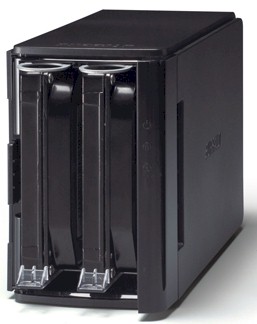
Pro Duo WVL with front cover removed
Port complement and indicators are the same as the WXL, too.
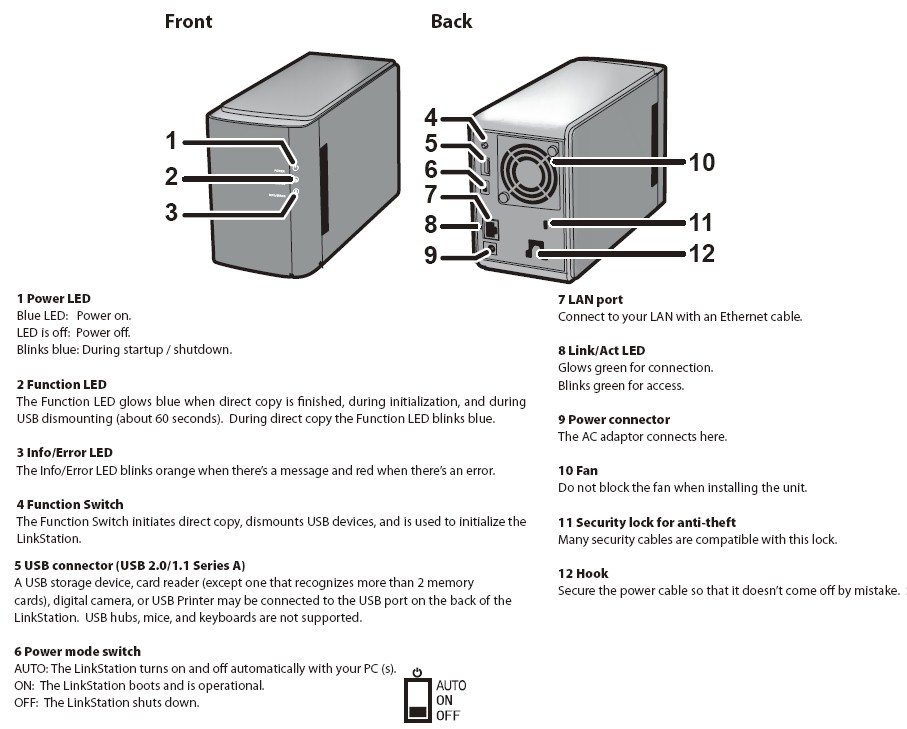
Pro Duo WVL front and rear panels
I didn’t disassemble the unit for a board shot, because the design is the same as the single-drive VL. Besides the Marvell Kirkwood SoC, there is 256 MB of Hynix DDR3 RAM, 512 KB of flash and a Marvell 88E1318 Gigabit Ethernet chip.
Power consumption measured 17 W, which drops to 3 W when any of the programmable four sleep periods kicks in. Buffalo still hasn’t provided an idle drive spindown feature, however. The single small fan ran quietly, but drive head noise was audible in my quiet office from time to time.
I tested the WVL with its factory-installed 1.37 firmware using our latest Revision 4 NAS test process. The Benchmark summary below gathers all the WVL’s test results into one place for easy comparison.
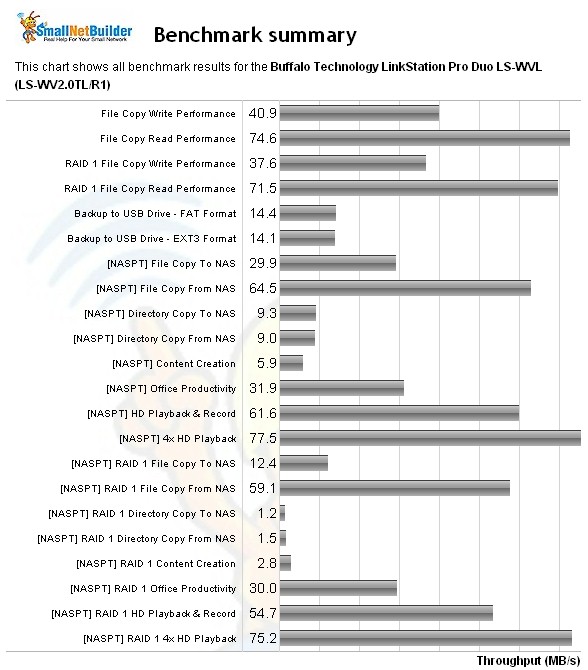
Pro Duo WVL Benchmark Summary
As with the single-drive LinkStation VL, NASPT File Copy write results were much lower than those obtained with the Windows based File Copy (29.9 MB/s vs. 40.9 MB/s). NASPT File Copy write for the WVL, however, was about twice as fast as for the VL (29.9 MB/s vs. 13.3 MB/s). The WVL’s higher write speed could be due to its RAID 0 configuration for the test.
RAID 1, however, really knocks down write speed for the NASPT File Copy to NAS benchmarks (29.9 MB/s to 12.4 MB/s). Reads speeds are about the same, however, as are the Windows File copy writes. Just shows the difference that benchmark conditions make!
You’ll see a couple of backup to USB attached drive tests in the Benchmark summary, which came in around 14 MB/s, about half the maximum USB 2.0 backup speed I’ve seen on other products.
To see how the WVL fares against other dual-drive NASes, I ran RAID1 Windows Write and Read File copy charts. For writes, as you might expect, the WVL tops the group of Marvell Kirkwood NASes like the Synology DS209 and QNAP TS-219P, but lags way behind Atom-based products like the QNAP TS-239 Pro II and Cisco NSS322. Note that the WVL leaves the old LinkStation Duo WXL in the dust down at 19 MB/s.
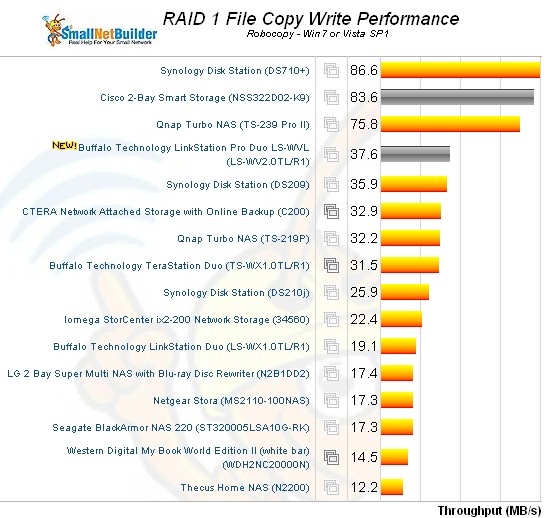
RAID 1 File Copy Write Comparison
But the gap between Kirkwood and Atom NASes closes for reads, at least for the WVL and the Synology DS209. Again, though RAID 1 File Copy reads for the old Duo are significantly lower at 51 MB/s.
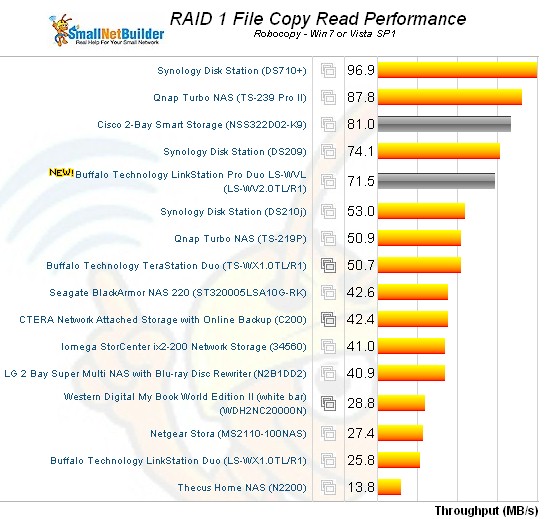
RAID 1 File Copy Read Comparison
So for $260, you get 2 TB of storage and performance about on par with the same-priced Synology DS209 and much more expensive QNAP TS-219P. Both those options are models that are well on their way toward being discontinued, though. If you want another two-bay NAS with the newest 1.6 GHz Kirkwood, you’d be talking the QNAP TS-219+, which again, is significantly more expensive at $349. Or a slightly lower priced Synology DS211 at $320. And that’s without the cost of drives you’ll need to add to both.
Since the WVL’s feature set and admin GUI haven’t undergone any significant changes since our last full Buffalo review, there won’t be a full review. Use the NAS Charts to further explore and compare the WVL’s performance and check out the LinkStation Pro WVL product page.
